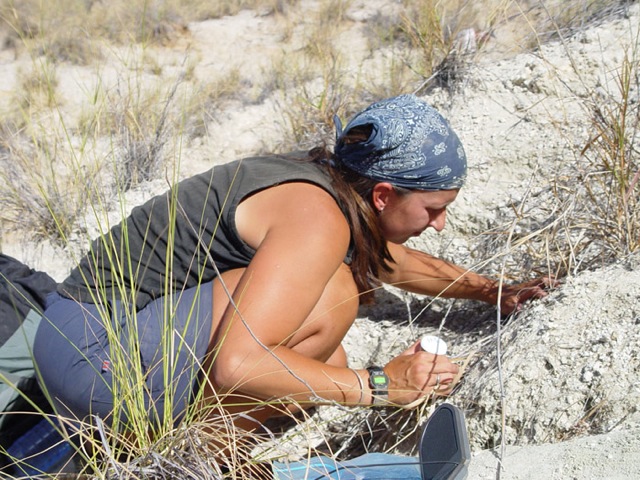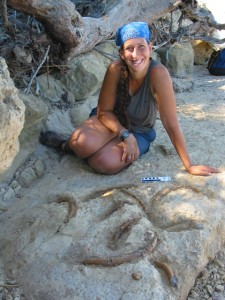
PhD, MPhil, & MS from Stony Brook University, BA & BS from the University of Massachusetts
Field sites past & present: Madagascar, Montana
Today’s scientist demonstrates just how much you can accomplish by returning to one main field area every year for fifteen years. Dr. Karen Samonds is a vertebrate paleontologist who studies the amazingly bizarre animals of Madagascar. If it’s not already near the top of your ecotourism hit list, Madagascar should be because most of its plants and animals are not found anywhere else in the world! In scientific terms, we call that endemic. It is also a hotspot of biodiversity – scientists from the Missouri Botanical Garden estimate that the (relatively) tiny island of Madagascar has almost half the number of plant species as the entire African continent. As for the animals, do a quick Google image search on lemurs? Can you possibly get any cuter?
Karen’s research centers on the origin and evolutionary history of these diverse and endemic animal communities. Madagascar is ~250 miles to the east of the southern African coast, and it has been isolated for at least 80 million years. Most of the animal groups that inhabit Madagascar today are thought to have arrived while it was isolated. When and how did they arrive? Where did they come from? What did the original colonists look like, and how much has evolution changed them over the millions of years since they arrived? These questions have remained largely unanswered because there is a 65 million year gap in the fossil record surrounding the time when scientists think that modern groups arrived. Karen and her colleagues journey to remote areas of Madagascar, searching for new outcrops and fossils. So far, they have discovered localities that are 30-50 million years old, allowing them to gradually fill in the gap in Madagascar’s fossil record!

One of the things that impressed me most about Karen is that she and some scientific collaborators founded an NGO to promote conservation, education, development, and also scientific research in and around Tsinjoarivo, Madagascar. In addition to encouraging scientific research (including field censuses of modern lemurs), the Sadabe NGO has organized dental and women’s health clinics, reforestation programs, an annual primatology field school, training of locals in scientific data collection, and creation of ecotourism brochures. Most impressively, in 2005, they partnered with the Madagascar Ankizy Fund to build an elementary school that teaches over 200 students each year. So many of us field scientists travel to places like Madagascar, do research, wish we could do something to help the locals, but then return home and go back to our usual American lives of research, teaching, families, and hobbies. I greatly admire Karen for being both a humanitarian and a scientist!
For more information on Dr. Karen Samonds, please visit:
http://www.bios.niu.edu/samonds/samonds.shtml
http://www.sadabe.org/Samonds/Index.html
For more information on the Sadabe NGO, visit: http://www.sadabe.org